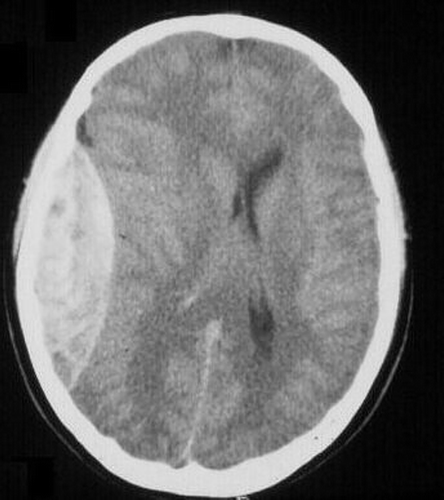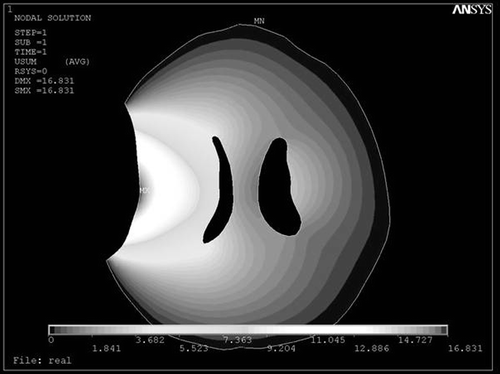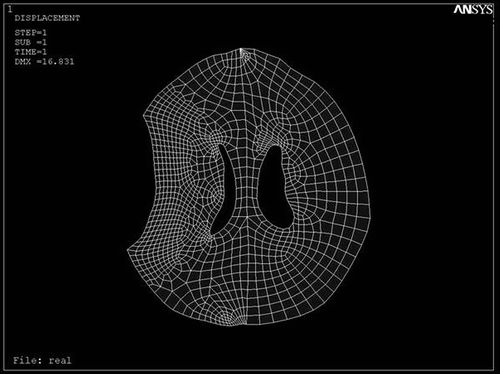Figures & data
Figure 1. Patient's CT scan with left parietal epidural hematoma. Note the midline shift; the imaging is otherwise normal.

Figure 2. Biomechanical modeling of the CT data after meshing and applying boundary conditions in ANSYS 8.0. Note the refinement in the vicinity of the load.

Figure 3. Displacement field of modeled brain after loading the displacements of the hematoma with intra-ventricular pressure of 1.25 kPa in ANSYS 8.0.

Table I. The difference (d) between displacement of reference points on the modeled brain and the patient's left ventricle with different pressure gradients (P = intra-ventricular pressure in kPa; D = displacement).
Table II. The difference (d) between displacement of reference points on the modeled brain and the patient's right ventricle with different pressure gradients (P = intra-ventricular pressure in kPa; D = displacement).
Table III. The mean square value of differences in the displacements of reference points of the modeled ventricle and the patient's ventricles with different pressure gradients (P = intra-ventricular pressure in kPa).
